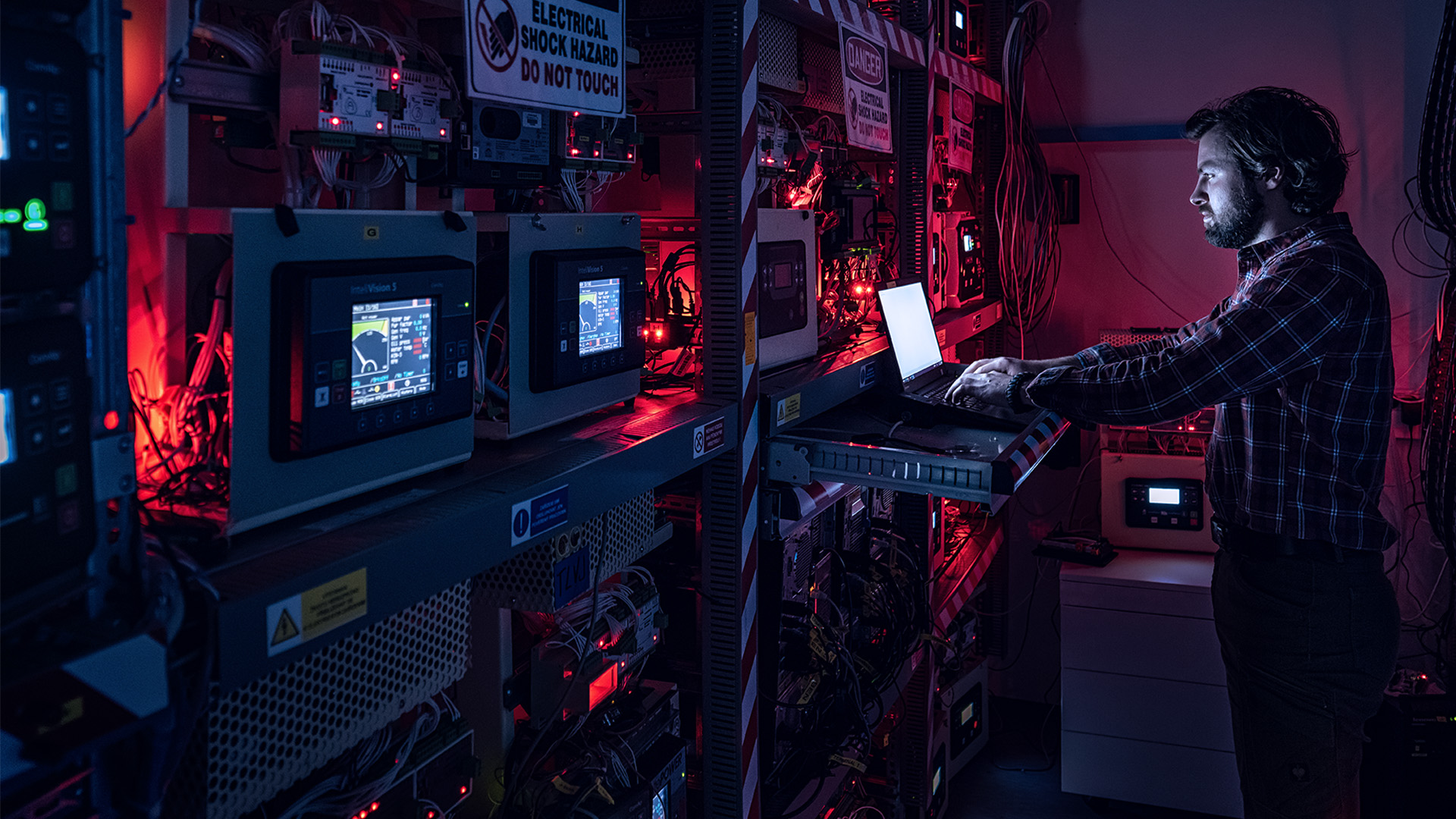You need an account to access this content
Create a free account and get access to all downloads and more!

Life At ComAp
17 Jun 2024
5 min read
Since the release of OpenAI’s language learning model, ChatGPT, in late 2022, the world has seen a significant uptick in the widespread use of AI chatbots and tools. Now, in 2024, with tech giants like Google, Amazon and Microsoft pumping massive amounts of power and resources into a race to advance artificial intelligence, and more people integrating AI into their daily lives, the mass adoption of AI is on the horizon.
The true extent of AI’s impact on the future is still up for debate, but if one thing is certain, AI will have major implications for individuals, industry and society. Sam Altman, the CEO of OpenAI, has stated that “Generative AI has the potential to revolutionize nearly every industry”. With this in mind, we decided to explore the innovative ways in which AI is already being used within our own industry. We spoke to ComAp’s Stefan Hedvig, a team leader in our Research and Development department, to find out more about how AI is being used in R&D to optimise their work.
Stefan, to begin with, could you please give an overview of what AI tools are currently being used by R&D at ComAp?
Certainly. Right now, in our R&D team, we are using two main AI tools. The first of these is a language model ChatGPT, which is embedded into Microsoft Edge. This language model is capable of providing our developers with advice and suggestions on technical information. In our specialisation, it can also be used for providing codes and offering assistance with coding.
The second tool, and the one we use the most in our work, is GitHub Copilot. This is an AI tool that provides direct assistance with software development. Unlike the GPT tool, which is essentially an extension of Microsoft Edge, GitHub Copilot is integrated directly within our development tools and assists developers in real-time with their tasks.

Stefan Hedvig, R&D Team Leader
Could you elaborate on how the integration of GitHub Copilot assists developers with their tasks?
Our software developers work extensively with a program known as an Integrated Development Environment (IDE), which is a tool that assists with writing code. GitHub Copilot is embedded directly within this tool (IDE), and its integration assists our developers in many ways. Like GPT, GitHub Copilot can suggest and work with code. However, unlike GPT, since GitHub Copilot is integrated, it has a comprehensive understanding of our specific code and its various functions. As a result, it can predict, suggest and write code in real-time based on current inputs. Previously, all our code had to be written manually, which can be a very time-consuming process, especially considering the specific inputs and symbols used within our code. Now, however, GitHub Copilot can enter the correct information almost instantly based on our requirements, saving our developers a substantial amount of time and helping them work more efficiently.
Another great function of GitHub Copilot that has positively impacted the work of developers is its ability to design new code or functions based upon prompts. This feature works as if you have a very skilled developer sitting next to you. You simply ask it to write code that fulfils your requirements, and it will do it.
One feature of GitHub Copilot that I’d really like to highlight is a function called ‘Inline Chat’. In this, the AI essentially functions as a chatbot capable of explaining code and answering coding-related questions. This is an extremely useful tool in our work as developers.
How so? What is it about the ‘Inline Chat’ function that makes it so useful for developers?
In our R&D, more than 30 developers often work on the same code. If you were just one developer working on your own code, you would be familiar with its intricacies, and it would be easy for you to understand. However, when many developers work on one larger code, it can become more complex and difficult to understand. You see, a large part of a developer’s role is to understand the existing code and then implement new code that will function with it. To ensure the correct functionality of the code, there needs to be consistency in the understanding of the code and in the coding language used by every member of our team. Inline Chat explains the existing code and enables developers to implement new code accordingly, ensuring consistency and functionality across the entirety of the code.
That sounds useful. I can imagine it must save developers a lot of time. Could you go into more detail about the positive impact the use of AI tools has had on the work of the R&D team at ComAp?
Absolutely! Even for experienced developers, the process of writing code can be time-consuming. Using this tool has saved our developers a significant amount of time when it comes to writing code. This means that a larger portion of our time can now be dedicated to the more intellectual and creative aspects of our work, which drive innovation.
So yes, in short, I’d say that using AI enables developers to be much more efficient and productive in their work, because they no longer need to spend significant amounts of time on writing code. As a result, this has brought more joy and fulfilment to our work in R&D and has created an overall better environment to work within.
Are there any skills or expertise that are required for someone to work effectively with AI in R&D?
Yes, there are, and to properly answer this question, we first need to address another question that we get asked quite often: ‘Will AI replace us?’ In my honest opinion, I can say with 100% certainty that AI will not replace developers, because to successfully carry out our work as developers, it is necessary to understand the needs of the customer on a human level. Only then can we implement the right measures to meet those needs. Of course, you still need an understanding of the subject area, but just as importantly, you need to have an in-depth understanding of the human requirements of the customer.
Then you also need to have a decent understanding of the AI tool you intend to use. In the case of our R&D team and GitHub Copilot, each team member has their own preferred way of using the tool, and this is something they had to discover for themselves through using it. This can take a little time to figure out, but it is worth it. It is the same as exploring the best way to work with a new colleague. You must first discover what works best between you so that you can cooperate productively.
Looking to the future, how do you see the role of AI at ComAp developing over the next five to ten years?
In the future, I can see AI being used in some capacity across most of the departments at ComAp. Most likely, it will be used to handle many of the less interesting, simple and repetitive tasks that are necessary but time-consuming. I think these types of tasks will almost entirely be taken care of by AI. And as we have already seen in R&D, I believe AI will improve the productivity and fulfilment of more employees at ComAp, giving people more time and freedom to focus on innovation and creativity in their work.

Curious to learn more about the current opportunities in R&D at ComAP? Check out our open R&D roles today.